Dragon Ball Z fighting games started off pretty poorly and stayed that way. The early games on the Super NES may have never made it to North America, but those who imported the titles or discovered them via emulation years later would find that they were pretty poor once the novelty of controlling Goku and company had worn off. If you look at the current crop of Dragon Ball Z fighting games on the Xbox 360 and PS3, you'd see that they aren't faring well, either, with some unimaginative games that seem content to recycle the same mechanics and story lines with little to no change. However, there was a time when the fighting games based on the hit anime weren't as widely panned, and for most fans and critics, this was the Budokai series on the PS2. Thanks to the HD remake craze and the recent string of Dragon Ball Z games not being up to snuff, the powers that be are bringing two of those games together with a new layer of polish as Dragon Ball Z Budokai HD Collection.
Dragon Ball Z Budokai is the first entry in the compilation, and it marks the introduction of a few elements to the series. The game consists of a few modes, including duel and practice modes, which are expected from almost all fighting games. The World Tournament mimics the one seen in the show, with your selected character going through a tournament of randomly selected fighters to win cash that can be used to customize the capsule layout in future bouts. The major focus is on the story mode, which lets you relive the major fights from Raditz's arrival to the Cell saga from Goku's perspective. On top of that, you also get the other fights from that story line as experienced by the other characters, hypothetical fights coming from the antagonists, and a small story arc focusing on Hercule in the World Tournament.
Form a presentation perspective, the story mode tries to serve as a primer for those who have either no knowledge of the series' events or have forgotten some major plot points. Story arcs are presented as episodes, complete with narrated cut scenes and title cards. While there isn't much in the way of dialogue between characters during non-fighting scenes, you'll get up to speed with the major events soon enough. Still, the game doesn't seem to do too much in terms of giving players all of the story details. The Raditz/Vegeta arc, for example, doesn't go over how Gohan became a more capable fighter until after you beat the game and choose to replay that tale. Other scenes simply show new enemies in a post-fight state with no explanation of how they went from fully clothed to completely tattered. While this would be considered terrible for most other game series, it's passable here because of how little the other Dragon Ball games handled the convoluted tales.
The simpler fighting mechanics are what made this stand out from previous Dragon Ball games. All of your actions are governed by four buttons, three of which cover different attack types (energy, kick, punch) while the last one initiates blocking. The attack buttons can initiate some basic combos and deliver a good deal of damage. When the attack buttons are combined with specific directions and sequences, players can unleash even better moves and some signature attacks, like the Kamehameha. In some sequences, players can button-mash to unleash a short flurry of hits and blocks.
Time hasn't been kind to this game, so what was revolutionary before now feels primitive. At the time, players were simply glad to get a competent licensed fighter after so many misfires. Looking at the product now, each fighter was really limited. Every fighter has the same basic moves, combos and animation sets. All of the moves feel a bit stiff, and there's not much room for throwing out anything but premade combos. The only way fighters differ is through capsules, which provide them with special moves. With the exception of certain capsules meant for certain fighters, players can ensure that the special abilities are shared between everyone. Sadly, the advances brought about by the engine didn't help the game re-create the pace of the fights from the anime. Air fighting is only done when you knock someone into the air, and while you can knock someone pretty far back, it doesn't feel as outrageous as it does in the anime. Fans who had a soft spot for the game at the time will still like what they see, but for everyone else, the first game feels like a footnote and a basis for something greater.
The other entry in the package is Dragon Ball Z Budokai 3, a game that's a marked improvement in just about every respect. Coming in from the first game, most of the modes remain unchanged. The duel mode still gives you the option to fight against another opponent locally, go against the CPU, or have both CPU players duke it out, though the roster has increased to over 40 fighters compared to the 20+ in the first game. Practice mode remains the same, as does World Tournament mode, which has the same rules and prizes as before.
Story mode has changed dramatically. Instead of a linear mode like in the first game, you have what can be best described as a quasi-RPG involving the main heroes as they fight from the very beginning up to the Majin Buu saga. After selecting a character for the entire campaign, players spend their time divided equally between fights and the overworld map. Most of the time, the map is used to kill time between fights as you're forced to travel to the location of your next bout before you can start it. You can also use the time to look for random capsules, money, and Dragon Balls, which give you special items once you find them all. Completing each fight grants experience, which you can use to customize your fighter for the rest of the story mode and other gameplay modes.
On the one hand, the revamped story mode is more involved since you have a chosen fighter to control from the outset. Though you'll be involved in the same story, you'll experience different perspectives and fights depending on who you choose, giving the mode a lot of replayability. Considering that you'll also open up bonus missions if you replay the mode with the same character, players will be spending a lot of time in a mode that most fighting games consider to be a throwaway. This is good news for the solo player, but this mode also favors series veterans over newcomers since it glosses over lots of details, such as character deaths, resurrections, and discoveries. Newcomers will not only be confused but also may not end up enjoying the narrative.
The core of the fighting engine is the same. Once again, your four face buttons govern all of the action, with one dedicated to blocking and the others dedicated to a specific attack type. A combination of buttons and directions provides special moves and combos. There have been some additions made to the engine, though. Fusions can now happen, where two fighters meld together into a more powerful singular being, giving the player the chance to turn the tide at the last minute. There's still no jumping, but air fights occur more often than before, and bouts can often switch between air and ground skirmishes. Air fights are also more exciting since you can chase the enemy to inflict a few more punches before he or she recovers. The fighting is still a bit stiff, but it feels much faster thanks to teleporting, a defensive move used to counter all of the offensive additions.
The tweaks improve the fighting. Regular fights feel more exciting to watch, and the AI isn't susceptible to the same combos as before, really forcing you to change things if you want to win often. More importantly, the tweaks help make the bouts just as outrageous as the anime. Bodies sliding across the ground always create dug-in paths. Background elements break apart once bodies fly into them, and special moves finally have the associated flair that makes them look devastating. The constant exchanges are a hallmark of the anime, and it's a delight to see the pacing almost perfectly replicated here.
Players shouldn't expect new modes to appear for either game. Bonus quests, online leaderboards and online play weren't present in the original PS2 incarnations, so expecting them to show up now is a bit foolhardy, though Trophies are present since they're a system requirement. It is perplexing to see the second game in the series missing from this compilation. Admittedly, this may be a good thing, as the fighting fundamentals remained the same between the first and second titles, with a bump in the art style being the only improvement. However, those looking for a continuation to the story mode won't find it here, as the game opted for an original tale told via a board game-type system. The third game improves upon all of the mechanics and provides a much more involving single-player mode, so it's understandable that the publisher decided to skip the second entry in favor of the third one. For completionists, though, having it included in the package would've made it worthy of the Collection moniker.
Graphically, both games are quite different. The first game went for a standard polygon look similar to the 3-D fighters of its time. While it meant that some of the details in the animated series went missing in the game, it still retained the overall look, making it good enough for the fans. The third game, however, went for the cel-shaded look, and the improvement is striking. Save for some minute details, fans were finally graced with characters who looked as close as possible to their animated counterparts. The detail jump not only affected the characters but the backgrounds as well, and while the details in the third game's backgrounds could have been more vivid, they look better than what was seen in the first game. What hasn't changed are the animations, which are a little stiff, especially in the first game, but passable. Regardless of which style you prefer, they both made the transition to HD as painless as possible, as both styles look clean on modern screens with a locked frame rate and barely any sign of upscaling. The only reminder you'll have that these are older games is the constant 4:3 ratio presentation on menus and cut scenes, with 16:9 being reserved for the gameplay sections. Considering that almost all of the scenes are rendered-in game, the decision to make most of the game in 4:3 is odd, but it becomes tolerable after some time.
The sound is similar in some ways and different in others. The voices for both games are done by the original English cast and sound good. Like the original games, only the third game features the Japanese voice cast, so it can be grating to go through the first game without that option. Also, while the first game is fully voiced during the story mode, the third game only uses voices during certain cut scenes. It's puzzling considering that some of the unimportant scenes are blessed with a full vocal performance while other, more pressing scenes go by with silence. The effects are the same between both games, though they vary in quality; the effects in the third game come through with the right pitch while the first game's effects sound muffled and compressed. With the improvements to the fighting mechanics in the third game, the weak sound effects don't give many players much of a reason to try the first game.
Finally, there's the music, the one area that will not give anyone flashbacks of their first experience with the PS2 games. For one reason or another, Namco Bandai decided to dump the works of the original composer of the games and use the score from its recent lineup of Dragon Ball Z games instead. The changes don't seem that detrimental, as the score is still exciting and seems to fit the situations perfectly, but those looking for some authenticity to the original source material will might find this change to be too drastic.
Like all of the HD remakes that have come out in the past few years, Dragon Ball Z Budokai HD Collection is meant to capitalize on the nostalgia from older players who want their favorites on a current system, with the appropriate care taken during the transition. In a way, it works. All of the modes and mechanics from the two games are exactly as you remember them, with no other alterations beyond presentation changes. Thankfully, those changes don't interfere with the end product, but this HD package also serves as a reminder of how good the fighting series can be if the source material receives the proper care and reverence. That helps make it more appealing to new players who have dismissed the series based on the current-generation offerings. For those players in particular, this collection comes highly recommended — provided you focus more on the third game in the series and less on the first one.
Score: 7.5/10
More articles about Dragon Ball Z Budokai HD Collection


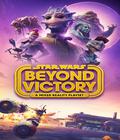
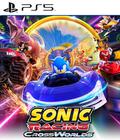
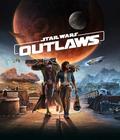
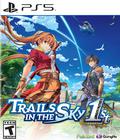

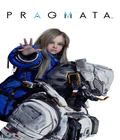
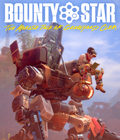
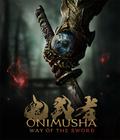

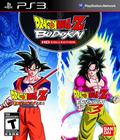 PlayStation 2 titles Dragon Ball Z Budokai and Dragon Ball Z Budokai 3 are enhanced, remastered in HD, and bundled as the Dragon Ball Z Budokai HD Collection.
PlayStation 2 titles Dragon Ball Z Budokai and Dragon Ball Z Budokai 3 are enhanced, remastered in HD, and bundled as the Dragon Ball Z Budokai HD Collection.











